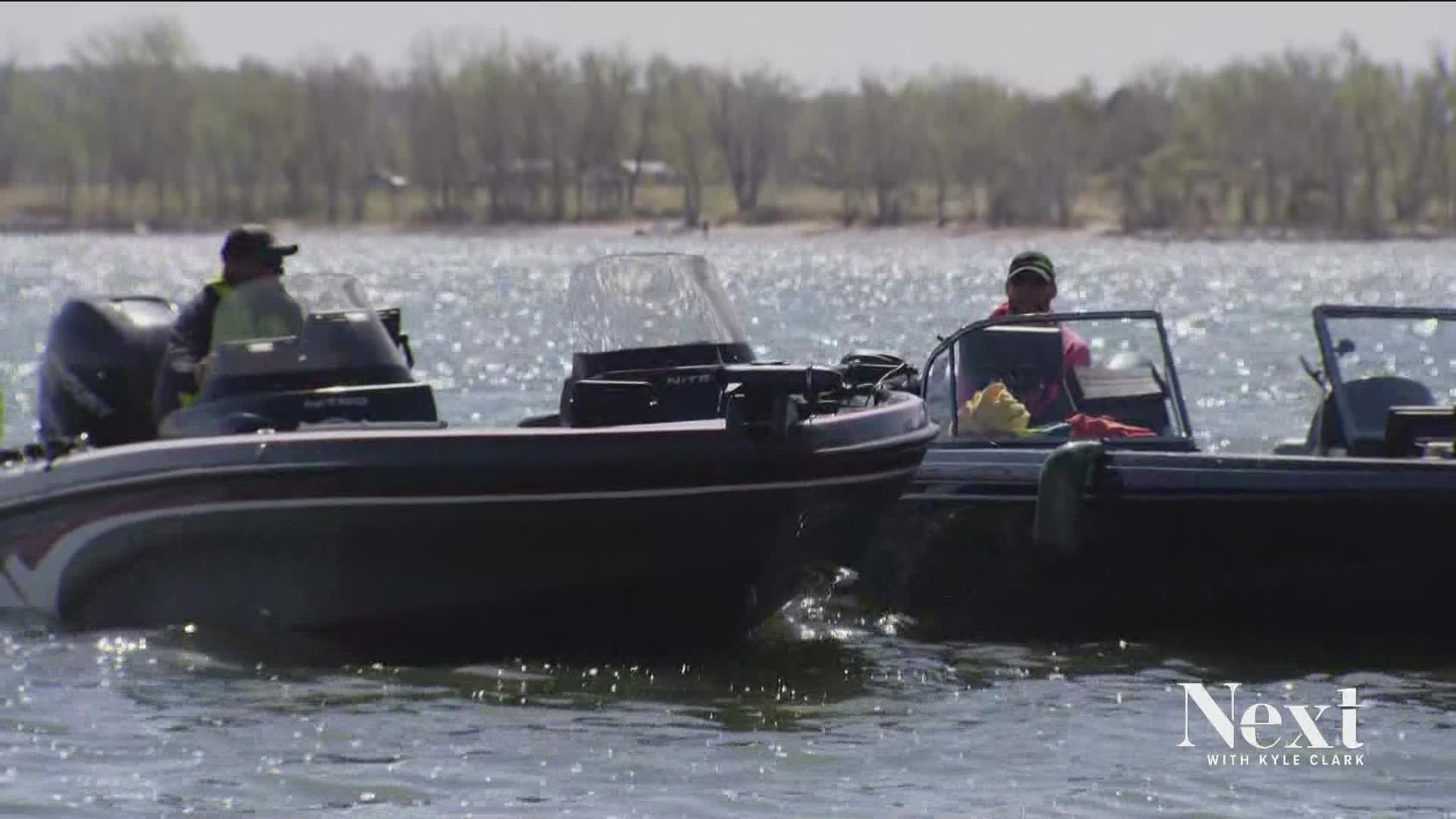DENVER — Looking at the spring snow in the mountains, you'd hardly know the unofficial start of summer has arrived. Review some basic safety tips and rules before making plans to head out on the water.
Life jackets and what to wear
Colorado Parks and Wildlife says you can be ticketed for failing to follow life jacket rules:
- There has to be one life vest in a boat for each person. That applies to paddleboards, canoes, etc.
- Kids 12 and younger have to be wearing their jacket.
- No matter your age, you have to wear a life jacket at all times on a jet ski, or while wakeboarding or being towed by a boat.
Beyond life jackets, you might need a helmet or wetsuit, depending on the activity, location and conditions. Don't wear flip-flops while tubing or on slick rocks by the water. Do wear sunscreen and keep necessities, like car keys, attached to you.
Cold water
Especially at higher elevations, water can be particularly cold in Colorado, even in summer. In fact, Colorado Parks and Wildlife says most large bodies of water in the state don't hit 70 degrees at any time in the summer. Those that do might take until July and August to reach that temperature.
"Once you get to the surface you have, honestly, seconds if not just minutes to get oriented. You start losing dexterity very quickly," said Grant Brown, the boating safety manager for Colorado Parks and Wildlife. "We often do hear about a potential leg cramp. I've experienced that hitting cold water. Cramp in your arm, again trying to stay above -- keeping your head above water in waves, as well."
Brown said swimming ability doesn't usually matter in cold water like that unless you're really close to shore.
With all that said, swimming is not off-limits in Colorado's lakes and reservoirs in May. Bodies of water typically have specific safe swimming areas near shore that are segmented off by buoys.
In the case of boaters and people on paddleboards or kayaks, those people don't plan to go into the water. That's why it's so important that they're wearing a life jacket. Even with the risk of hypothermia, once you're in the water with your life jacket on, you greatly increase your chance of survival.
Rushing water
Lieutenant Chris Rhodes with the West Metro Water Rescue Team told 9NEWS in 2019 that he's had to pull bodies from swift water a few times a year.
"The water is so fast that even just a foot, maybe two feet, can sweep you off your feet, and certainly a little kid. Water lower than that would be really easy for them to get swept away," Rhodes said.
He added that water conditions can change quickly with snowmelt and weather conditions. Someone who felt comfortable in a moving body of water last week might not necessarily feel that same way today.
If you do fall into swift waters, try to get to the shore, Rhodes said.
"Don’t stand up in the center because it’s going to be hard," he said.
And if water appears dangerous, it probably is.
The nonprofit American Whitewater also keeps track of river conditions in Colorado and elsewhere.
Swimming
- It sounds obvious, but don't get into water, especially without a life jacket, if you do not know how to swim.
- Supervise children in the water.
- Swim in designated swimming areas.
- Don't swim alone.
- Check weather conditions.
What to do in a boating accident
If you are involved in or come across a boating accident, there are essential steps you need to take:
- Stop at the scene and assist others if you can do so safely. This is required by law.
- Don’t risk lives to save equipment.
- Each person who was involved in the accident must file an accident report. By law, you must exchange names, addresses, vessel IDs and the name of the owner of the boat.
If you are in a boating accident, you can file using a boating accident report form within five days of the incident if there was a loss of life or disappearance from a vessel, an injury that required medical treatment or property damage that exceeds $2,000 or complete loss of the vessel.
Most boating accidents are caused by careless operations, excessive speeding and failure to pay attention. The leading cause of boating fatalities is capsizing and boating under the influence (BUI).
Take a boating safety course
Typically these courses are intended for those who are 14 or 15 in order to operate a motorboat, personal watercraft or sailboat, but they are open to any boaters. Not only does this course help you stay safe, but could help you save 10-15% on boat insurance.
Equipment
In addition to life jackets, make sure your boat is prepared to be on the water in a new season. U.S. Coast Guard-approved safety equipment is required on all recreational boats.
Your checklist might include flags for water-skiing or swimming, a fire extinguisher, distress signals or a working horn.
This article includes previous reporting from 9NEWS.
SUGGESTED VIDEOS: Colorado Climate

